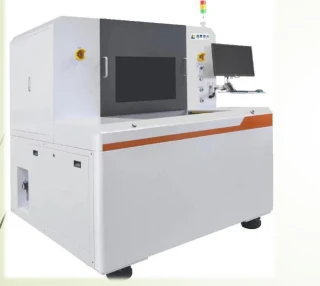Laser Cutters
Frequently Asked Questions
Laser cutting is a highly precise cutting technology that utilizes a focused laser beam to cut, drill, perforate and depanel various materials. Because of the localized nature of energy deposition through a focused laser beam, the cuts made by laser cutters are extremely precise. Add to this the CNC capabilities, and laser cutters become the most precise cutting machines on the market. Laser cutters generate very smooth edges and are capable of cutting various objects without damaging or warping the surrounding material.
Yes, most laser cutters come with integrated CNC capabilities allowing to program predefined shapes. Combined with precision laser beam steering technology this allows cutting very complex shapes and intricate details.
The primary drawback of laser cutters is their cost compared with competing technologies such as plasma cutting, waterjet cutting, mechanical cutting, sawing etc. That said laser cutting can actually be more economical on large volume projects requiring precision. The savings would come from lower maintenance costs, limited consumables and minimized scrap. Laser cutting will also require some training for expert operation of the machine even though most modern laser cutting machines are very user friendly.
The laser beam can be dangerous when coming into contact with skin or in case of a direct eye exposure. Most laser systems have safety features to mitigate this. Additionally, fumes created during laser cutting can be hazardous and care must be taken to extract them through a special fume extraction unit. The level of toxicity of the generated fumes will largely depend on the materials being cut.
The laser cutting process relies on the energy exerted onto the material by the laser beam. Depending on the wavelength of the laser beam in the laser cutting machine many materials including, wood, paper, cork, plastics metals can be cut by a laser cutter. With that said, not all materials can be cut with any laser cutter. The laser wavelength, output power, cutting speed, and repetition rate all play an important role on the capability and generated quality of a laser cutting machine.
The thickness of the cutting depends on what is being cut, i.e. the type of materials. Many laser cutters work in the range between 0.5mm to 15mm, and this will depend strongly on the laser parameters and the material properties.
Before selecting a laser cutter, you will need to carefully consider your application. What objects and materials are you going to cut? Is laser cutting the only process that you will use or would you also like to drill and engrave objects? Many laser cutters are multifunctional and you will want to select a unit that fits your applications. Additionally you will want to consider the work area, and laser specifications including the power, wavelength, repetition rate, as well as the CNC and integration capabilities. With all these parameters defined you will also want to consider your available budget and juxtapose this with other competing technologies.
FindLight offers a wide selection of laser cutters for various industrial and research applications. Choose from 3D laser cutters, PCB laser depaneling systems, laser drills, and more from top suppliers and manufacturers. Whether you need precision cutting, marking, or engraving, our laser cutters provide high-quality results for a range of materials, including metals, plastics, and ceramics. Browse our extensive catalog, compare specifications and prices, and contact suppliers directly for a quote. With our intuitive search and filter options, finding the perfect laser cutter for your needs has never been easier. Trust FindLight to connect you with the best laser cutting solutions on the market.


